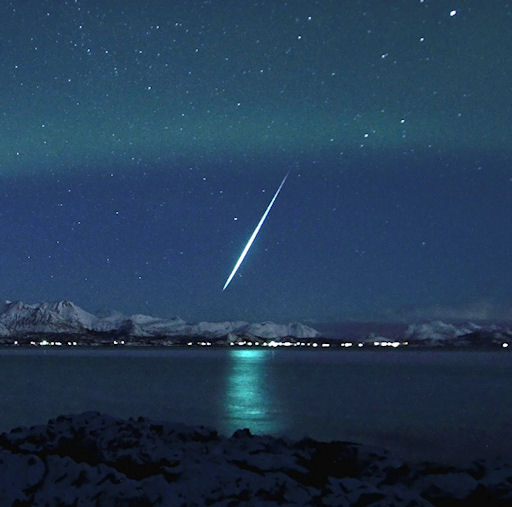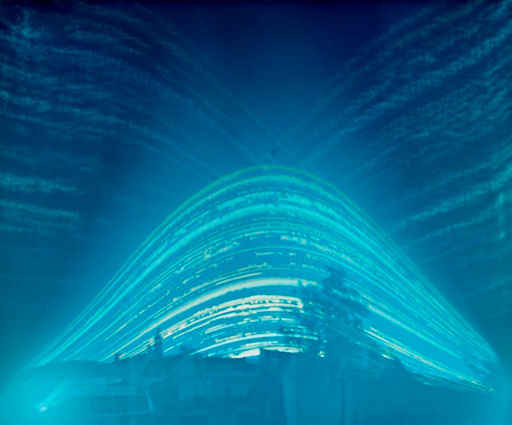Turn your cell phone into a field-tested satellite tracker. Works for Android and iPhone. | | | QUIET SUN: Solar activity remains very low. No strong solar flares or geomagnetic storms are expected durng the next 24-48 hours. AURORA AND METEOR: The sun is quiet, geomagnetic activity is low, but if you're in Norway you should keep an eye on the sky anyway. Last night, Frank Olsen of the Vesteralen Islands witnessed this scene: 
Photo details: Canon EOS 7D with Tokina 11-16 f/2,8, 6-10 secs. exp. ISO 800 - 1250
"No auroras were expected last night," says Olsen, "but the clear skies enticed me outside to photograph the stars. Imagine my surprise to catch some gentle auroras and a fireball streaking beneath them." The auroras should intensify on Jan. 2, 2011, when a solar wind stream is expected to hit Earth's magnetic field. More meteors are coming, too! Earth is heading for a stream of debris from extinct comet 2003 EH1, parent of the annual Quadrantid meteor shower. Forecasters say the shower should peak during the early hours of Jan. 4th with as many as 120 meteors per hour. Stay tuned! SUN IN A BEER CAN: Last July, Jan Koeman of Middelburg, the Netherlands, poked a tiny hole in an empty beer can, inserted a piece of photographic paper, and pointed the pinhole toward the sun. Six months later (Dec. 23, 2010) he extracted the paper and this was the result: 
"This is called solargraphy," explains Koeman. "Every day the sun makes a track across the photographic paper--high in the summer and low in the winter. Daily tracks are interrupted by clouds and, occasionally, absent altogether because of rainy days." It's a low-tech but beautiful way to record the seasons; browse the links below for more examples. more solargraphy: from Rijk-Jan Koppejan of Middelburg, The Netherlands; from Becky Ramotowski of Tijeras, New Mexico;
Lunar Eclipse Photo Gallery
[NASA: "Solstice Lunar Eclipse"] [astronomy alerts]
November 2010 Aurora Gallery
[previous Novembers: 2009, 2008, 2007, 2006, 2004, 2003, 2002, 2001, 2000] Potentially Hazardous Asteroids ( PHAs) are space rocks larger than approximately 100m that can come closer to Earth than 0.05 AU. None of the known PHAs is on a collision course with our planet, although astronomers are finding new ones all the time. On December 27, 2010 there were 1167 potentially hazardous asteroids. Notes: LD means "Lunar Distance." 1 LD = 384,401 km, the distance between Earth and the Moon. 1 LD also equals 0.00256 AU. MAG is the visual magnitude of the asteroid on the date of closest approach. | | The official U.S. government space weather bureau | | | The first place to look for information about sundogs, pillars, rainbows and related phenomena. | | | Researchers call it a "Hubble for the sun." SDO is the most advanced solar observatory ever. | | | 3D views of the sun from NASA's Solar and Terrestrial Relations Observatory | | | Realtime and archival images of the Sun from SOHO. | | | from the NOAA Space Environment Center | | | the underlying science of space weather | | 
